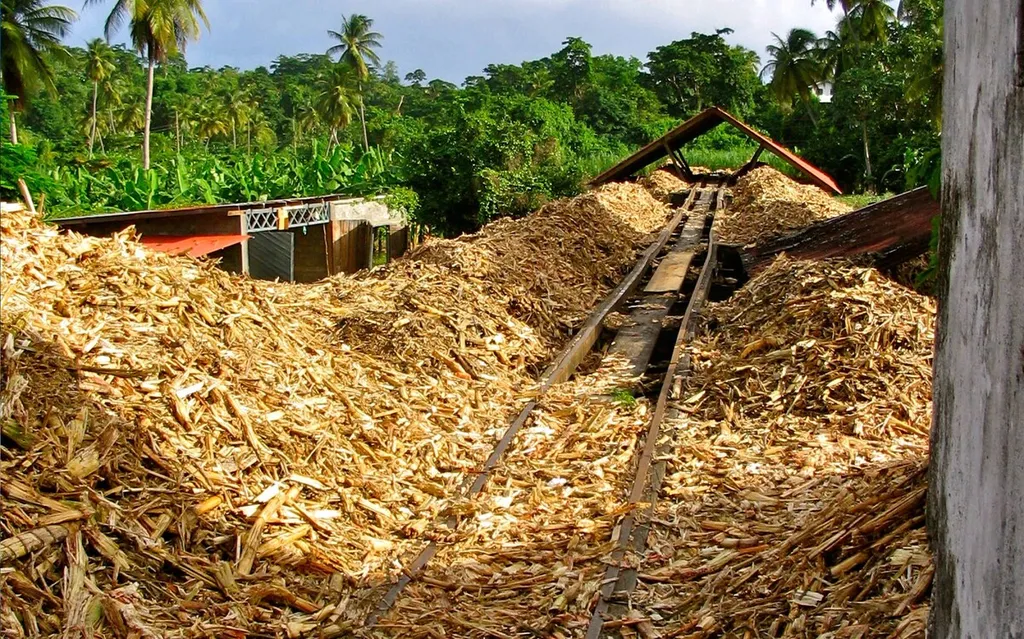In the heart of Iran, researchers are turning sugarcane waste into a goldmine of opportunity, potentially revolutionizing the agriculture industry and reducing dependency on imported substrates. Hamed Gahrouei, a scientist from the Agricultural Sciences and Natural Resources University of Khuzestan, has led a groundbreaking study that transforms sugarcane byproducts into jiffy pellets, offering a sustainable and locally-sourced alternative for seedling production.
The study, published in *Results in Engineering* (translated as *Engineering Results*), addresses the pressing need for sustainable agriculture and the desire to minimize reliance on imported substrates like cocopeat. By leveraging locally available sugarcane waste, the research team has developed a novel substrate that could significantly impact the agricultural sector, particularly in sugarcane-producing regions.
Gahrouei and his team conducted a series of laboratory and greenhouse experiments in 2024, creating jiffy pellets from combinations of bagasse, filter cake, perlite, compost, and cocopeat. These treatments were rigorously tested against two controls: agricultural soil and pure cocopeat. The key chemical indicators—electrical conductivity (EC), pH, cation exchange capacity (CEC), organic carbon, total nitrogen, and C/N ratio—were meticulously measured to determine the efficacy of each substrate.
The results were promising. Treatments B100 and B80-F20 exhibited favorable chemical profiles, with high CEC and low EC, promoting effective root nutrition. “These findings suggest that sugarcane waste can be a viable alternative to traditional substrates,” Gahrouei explained. “The chemical properties of these treatments are not only comparable but in some cases, superior to those of imported media.”
One formulation, B70-F20-P10, stood out as the chemically optimal blend. It boasted a balanced pH, moderate EC, and relatively high CEC. When tested with tomato seedlings, this formulation performed on par with cocopeat, demonstrating significant potential for commercial applications. “The performance of B70-F20-P10 was particularly impressive,” Gahrouei noted. “It supported robust seedling growth, indicating its suitability for large-scale agricultural use.”
The implications of this research are far-reaching. By utilizing sugarcane waste, farmers can reduce costs associated with importing substrates while also contributing to environmental sustainability. This innovation could reshape the agricultural landscape, particularly in regions where sugarcane is a primary crop.
Moreover, the study highlights the importance of local resource utilization in agriculture. As the world grapples with climate change and resource depletion, the need for sustainable and locally-sourced solutions has never been more critical. Gahrouei’s research offers a blueprint for how agricultural waste can be transformed into valuable resources, paving the way for a more sustainable future.
The commercial impacts for the energy sector are also noteworthy. As the agricultural industry seeks to minimize its environmental footprint, the adoption of locally-sourced substrates could reduce the carbon emissions associated with transportation and production. This shift could align with broader industry trends towards sustainability and circular economy practices.
In conclusion, Gahrouei’s research represents a significant step forward in the quest for sustainable agriculture. By turning sugarcane waste into a valuable resource, the study offers a compelling case for the adoption of locally-sourced substrates in seedling production. As the agricultural industry continues to evolve, innovations like these will be crucial in shaping a more sustainable and resilient future.

